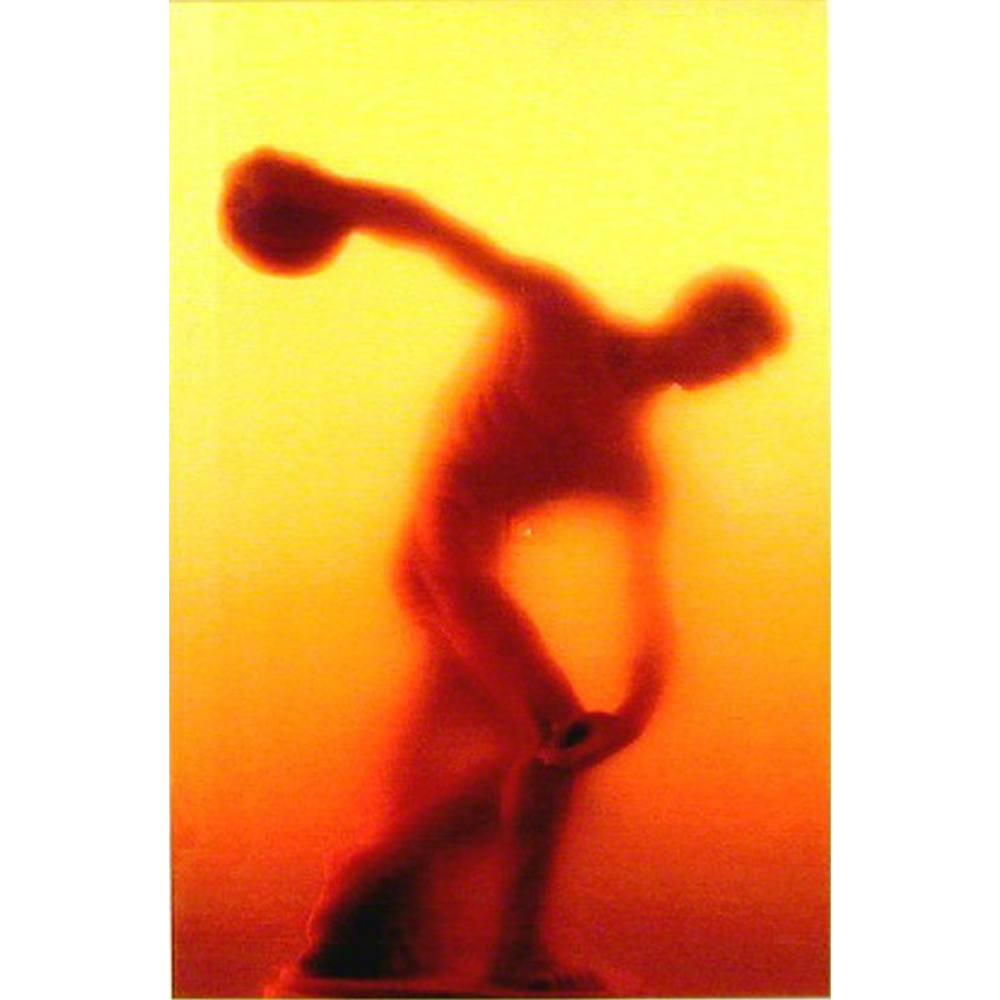Artwork Description
Andres Serrano – Piss Discus
Dimensions: 30 x 21″ unframed / 34 x 24″ framed
Year: 1988
Medium: pigment print, back-mounted on dibond, wooden frame
40 × 27.5″
Edition: 10,2AP
Born in New York City, Andres Serrano attended the Brooklyn Museum of Art School from 1967-69, and is self-taught in photography. He gained widespread notoriety in the late 1980s when his work was deemed obscene by conservatives and thus sparked a controversy about federal funding of the arts. In 1988, Serrano’s photograph Piss Christ, which depicts a plastic crucifix submerged in the artist’s urine, was included in a group exhibit at the Southeastern Center for Contemporary Art in Winston-Salem, North Carolina, an institution partially funded by the National Endowment for the Arts. The subsequent crusade against the NEA was led by Senator Jesse Helms, who called the work of Serrano “immoral trash.”
Andres Serrano is perhaps best known for his unflinching color photographs of controversial subjects including dead bodies, feces, handguns, Ku Klux Klansmen, and Catholic figurines submerged in bodily fluids. Serrano’s painterly compositions and rich tonalities create strange juxtapositions with his confrontational subject matter. In his famous photograph Piss Christ (1987), for example, Serrano uses a glowing, color-saturated palette to depict his transgressive subject: a crucifix suspended in urine. The photograph became a major touchstone in the American culture wars and sparked debates about arts funding in the United States. The artist has exhibited in New York, London, Paris, Tokyo, Berlin, Beijing, and Brussels. His work has sold for six figures at auction and belongs in the collections of the Museum of Modern Art, the Whitney Museum of American Art, the Art Institute of Chicago, and the Stedelijk Museum, among others.
For over thirty years, New York based artist Andres Serrano (b. 1950) has been investigating the fundamental social and ethical issues that divide America. He captures the Zeitgeist of what exists at the margins of our societies, where we all take part as actors, witnesses or victims. Following the global fame brought to Andres Serrano by his Piss Christ (1987), the artist continues to direct his audiences’ thoughts toward man’s standard of value judgment.
With the Immersion series, created between 1987 and 1990, Serrano uses bodily fluids, in connection with Christianity, as a way of trying to personalize and redefine his relationship with Christ. The artist evidenced his attraction in the duality of good and bad, life and death, acceptable and unacceptable. However, in this series, the urine, blood, or milk-immersed religious statues become golden versions of classic images that fuse the vulgar and holy together. Ultimately, they ask us to reexamine and recognize the sacredness in aspects of our corporal humanity that we reject.
Piss Christ typifies much of Serrano’s work in its use of shocking and confrontational subject matter, and in its literal corporeal material. Serrano has used his own bodily fluids in many of his photographs, submerging Christian and other symbols, and at times variously combining blood, urine, sperm, and milk, all evocative and symbolic essential fluids. Serrano was raised Catholic, and this formative experience seems to drive his explorations of the intimate relationship between the sacred and the profane. He has executed series of images of homeless people (or nomads as he titles their portraits), members of the Ku Klux Klan, members of the Catholic clergy, guns, and an extended series on dead bodies in the city morgue. Serrano seeks to portray the most compelling subject matter in a technically polished manner that eliminates extraneous elements. He frames central objects and scenarios, and renders them in lush color.
Serrano has had numerous individual exhibitions internationally, and has received grants from the National Endowment for the Arts, and the New York State Council on the Arts. He has been the subject of several monographs, including one accompanying a retrospective exhibition at the Institute of Contemporary Art in Philadelphia–the other institution targeted by the Senate in 1989–and most recently A History of Andres Serrano: A History of Sex (1997).
Lisa Soccio, International Center of Photography

